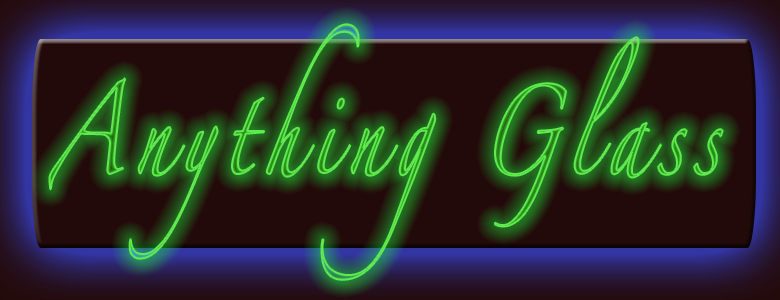Neon F.A.Q.
Q: How does neon work?
A: There are three major components to any neon sign. The neon tubes, the neon transformer, and the wiring that connects the two. All three of these components are mounted to some type of structure which could be anything from a skeleton frame of glass tubing to a metal cabinet. The neon tubes themselves are made of glass tubing which is sealed at both ends by glass encased metal electrodes. Neon electrodes are made of a mix of metals and chemical coatings and are surrounded by a glass shell which allows the electrodes to be joined to the glass tubing. Two wires pass through the glass shell of each electrode allowing the electrodes to be connected to the transformers. The power coming from the transformer energizes the electrodes and the electrodes excite the gas in the tube resulting in the light we see as neon.
Q: Is neon reliable?
A: Yes neon is very reliable. The neon tubes themselves are the longest lasting form of lighting available in electrical signs today and have been for nearly 100 years.
Q: Is neon expensive?
A: Neon is one of the most cost effective types of signage available. The cost of a neon sign can vary greatly depending on the size and complexity of the sign. However when the effectivness and long life of the sign are taken into consideration it is undeniably one of the most reasonable signage options available.
Q: Am I allowed to have a neon sign in my location.
A: Most likely you are able to utilize neon in one form or another. Sign codes vary from place to place with each jurisdiction dictating different restrictions based on zoning, building and street frontage and various other things. That being said there are a variety of ways to incorporate neon into your overall sign plan. If allowed your main signage either on a wall or a pole can incorporate neon as the primary focus or as accent lighting around the sign. Another excellent option are neon window signs. Most jurisdictions do not restrict signage that is installed on the inside of windows. This allows you to put as much neon in your windows as you like and still install a primary sign on the exterior of your building even if neon is not allowed. Another way to incorporate neon is with the use of neon border tubing around a building or roof line. Neon border tubing is typically considered lighting as opposed to signage and therefore does not detract from the total amount of signage you are allowed.
Q: Can I install neon myself?
A: Neon installation cannot be done by just anyone. A liscensed journeyman sign installer must be present to oversee the installation of any neon or other type of electrical signage. However you can hang a neon window sign in your window as they are self contained signs requiring only to be plugged into a standard electrical outlet.
